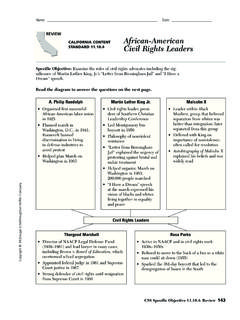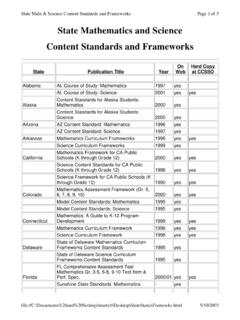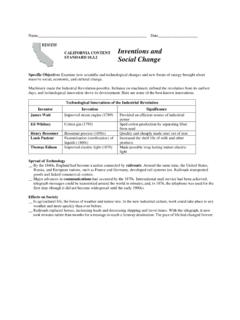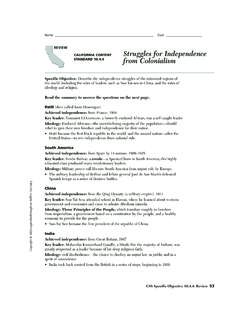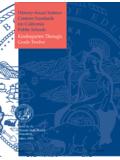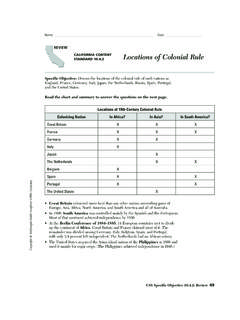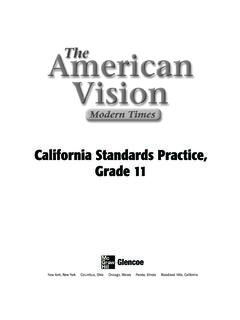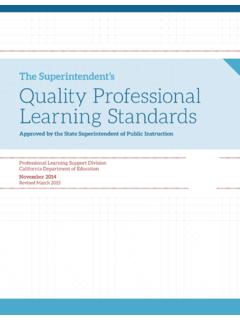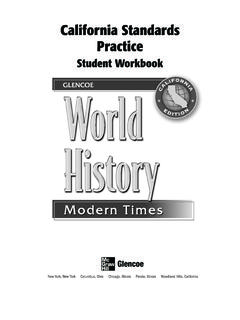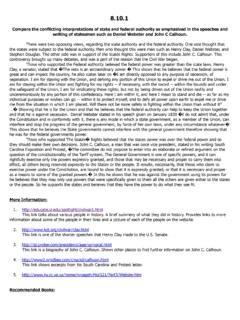Transcription of CALIFORNIA CONTENT The Spread of the STANDARD 11.10.5 ...
1 Name DateCopyright McDougal Littell/Houghton Mifflin CompanyCALIFORNIA CONTENT STANDARD Spread of the Civil Rights MovementREVIEWS pecific Objective: Understand the diffusion of the civil rights movement of African Americans from the churches of the rural South and the urban North, including the resis-tance to racial desegregation in Little Rock and Birmingham, and how the advances influ-enced the agendas, strategies, and effectiveness of the quests of the American Indians, Asian Americans, and Hispanic Americans for civil rights and equal the summary to answer the questions on the next Rights and African-American Churches Since the end of the Civil War, African-American churches had served as community centers.
2 Church leaders were community leaders as well. Martin Luther King, Jr. was a Baptist minister who was chosen to lead the Montgomery bus boycott. After the boycott ended, King and other ministers and civil rights leaders formed the Southern Christian Leadership Conference (SCLC). The SCLC used churches as its base to Spread protests and demonstrations throughout the South. Opponents of civil rights often targeted churches. Ella Baker of SCLC helped organize the nationwide Student Nonviolent Coordinating Committee (SNCC). Members of Northern churches provided moral support and fought discrimination.
3 Many in the North joined Black Muslim and Black Power to Desegregation in Little Rock and Birmingham The governor of Arkansas decided to resist school desegregation in 1957. He ordered the National Guard to turn away high school students in Little Rock. A federal judge ordered students admitted, and President Eisenhower ordered troops to help them attend. Students were allowed in but were harassed in school by some whites. The governor closed the school at the end of the year. In 1963, Birmingham, Alabama, was the most segregated city in the country. Reverend Fred Shuttlesworth urged Martin Luther King, Jr.
4 And the SCLC to use nonviolence to integrate the city. Protests continued for more than a month. Hundreds were jailed, including King and children. Nationwide television showed police attacking protesters with dogs and fire hoses. Protests, economic boycotts, and negative media coverage convinced leaders in Birmingham to accept Rights Movement Spreads to Other Minorities C sar Ch vez and others organized Hispanic farm workers in CALIFORNIA and used a nonviolent protest to get better pay and conditions. Several Latino political organizations such as LULAC and La Raza Unida were formed.
5 The American Indian Movement (AIM) formed in 1968 and confronted the government over the rights of Native American tribes to control their affairs. Legal victories for Native Americans included restoration of land in several states. Japanese Americans pushed for reparations from internment during World War II. Congress provided payments in 1965 and Specific Objective : Review 145
